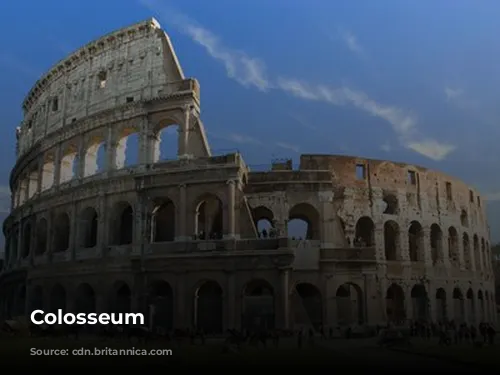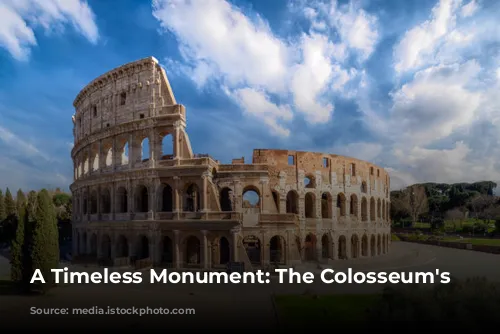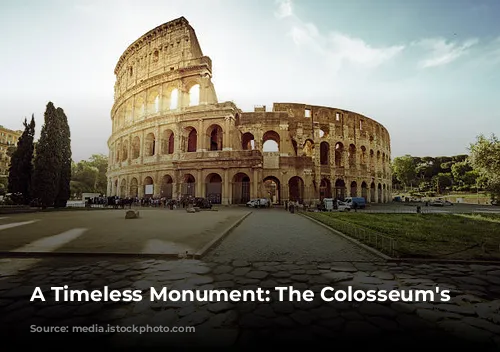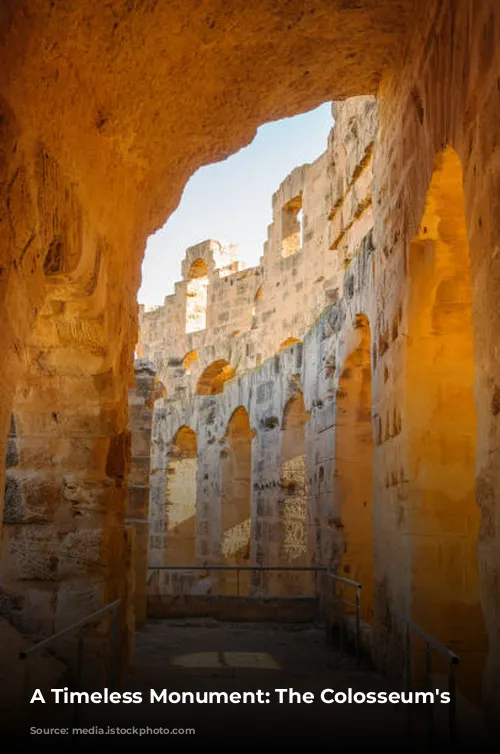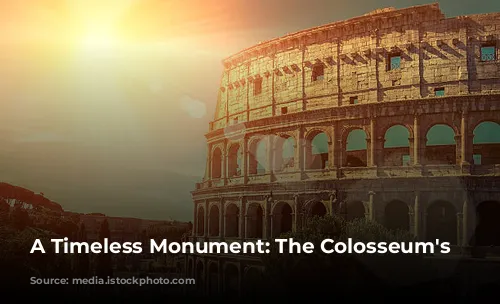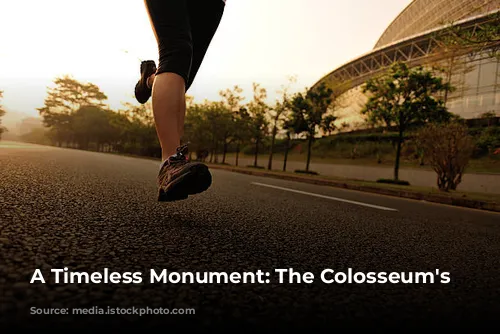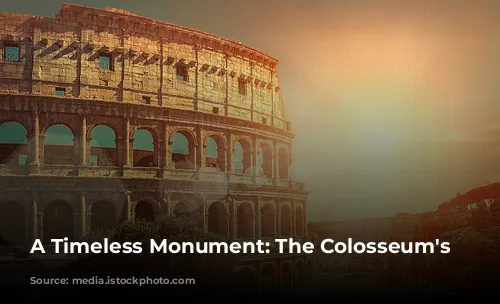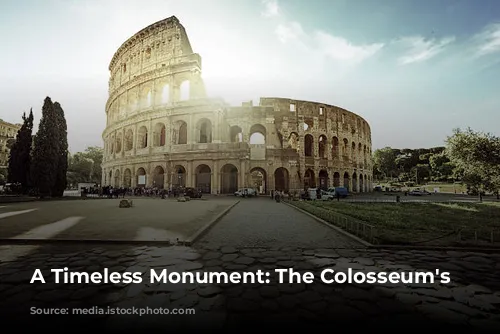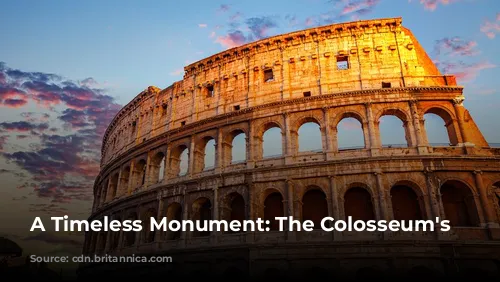The Colosseum, a majestic structure that has weathered the storms of time, stands as a testament to the architectural brilliance and engineering prowess of ancient Rome. More than just a historical landmark, the Colosseum continues to be a significant source of income for Italy, drawing in millions of tourists each year. In 2018 alone, the Colosseum, Roman Forum, and Palatine Hill collectively raked in over $63.3 million (€53.8 million), making it the most popular tourist attraction in the entire country. Its allure is undeniable, a beacon drawing visitors from across the globe to experience a piece of history firsthand.
From Glory to Neglect and Revival
Sadly, the Colosseum’s journey has not always been one of grandeur and success. Following the fall of the Western Roman Empire, the Colosseum fell into a state of disrepair, its once-glorious facade succumbing to the ravages of time. During the 12th century, the Frangipane and Annibaldi families, powerful families of the time, transformed the arena into their fortress, its purpose shifting from entertainment to defense. The late 15th century saw the Colosseum further exploited, used as a quarry by Pope Alexander VI. The arena, once a symbol of Rome’s might, was stripped of its materials, a tragic testament to neglect and greed.
Thankfully, the Colosseum was not forgotten. Recognizing its historical significance, state-funded restoration efforts were initiated in the 1990s, breathing new life into this ancient icon. The efforts to restore the Colosseum are a testament to the enduring power of history, reminding us of the importance of preserving the past for future generations.
A Birthplace of Entertainment
The Colosseum’s construction was born from a desire to revive the spirit of Rome after the tumultuous “Year of the Four Emperors,” a period marked by political turmoil and instability in 69 CE. Emperor Vespasian, known for his pragmatic approach, saw the Colosseum as a means to unite the people, providing a platform for grand spectacles that would entertain and distract them from the city’s struggles. The Colosseum was meant to be a place for the masses, a space where gladiatorial combat, thrilling hunts involving exotic beasts, and even elaborate mock naval battles unfolded before the eyes of thousands.
The Colosseum’s Birth and Evolution
Construction on the Colosseum began under Emperor Vespasian’s reign, between 70 and 72 CE. The majestic structure was finally dedicated in 80 CE by Titus, Vespasian’s son and successor, a grand spectacle lasting 100 days. The final touch came with the addition of the fourth story by Emperor Domitian in 82 CE, completing the Colosseum as we know it today. Interestingly, the funding for the Colosseum came from the plunder taken during Titus’s conquest of Jerusalem in 70 CE. The use of enslaved Jewish laborers from Judaea in the Colosseum’s construction adds a somber note to its history, a reminder of the complexities and injustices of the ancient world.
An Architectural Marvel
The Colosseum, officially known as the Flavian Amphitheatre, is an elliptical structure, built with a blend of stone, concrete, and tuff, standing tall at four stories. Its sheer scale is breathtaking, measuring a massive 620 by 513 feet (189 by 156 meters), capable of accommodating up to 50,000 spectators. The Colosseum’s design and construction are feats of engineering, utilizing a complex system of barrel vaults and groin vaults, creating a sturdy, enduring structure. Three of its stories are adorned with arcades, each framed by engaged columns in the Doric, Ionic, and Corinthian orders, a testament to the Romans’ architectural mastery. This rising arrangement of columns became a significant influence on the Renaissance, shaping architectural principles and design for centuries to come. The main structure was built using travertine, while volcanic tufa was used for the secondary walls, and the inner bowl and arcade vaults were crafted from concrete, showcasing the diverse materials and techniques employed in its construction.
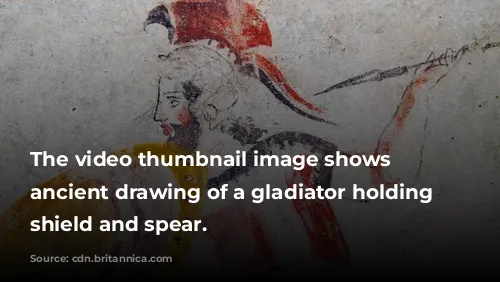
More Than Just a Fighting Arena
The Colosseum was not simply a place for gladiatorial combat, although that was certainly a major attraction. Its expansive seating could accommodate a vast audience, shielded from the sun by a massive retractable awning, known as a velarium. The velarium was supported by masts extending from corbels built into the top story, requiring a team of Roman sailors to manipulate the complex rigging that extended and retracted it. The Colosseum was a stage for a variety of spectacles, from intense gladiatorial duels and contests between men and animals to elaborate mock naval battles. The Colosseum’s rich history, however, is intertwined with controversy. There is uncertainty whether the Colosseum was the site of the martyrdom of early Christians, a matter that continues to fuel debate and historical investigation.

Enduring through the Ages
The Colosseum’s story is a tapestry woven with threads of glory, neglect, and ultimately, preservation. In medieval times, it was repurposed as a church, then as a fortress for the influential Frangipane and Annibaldi families. Over time, the Colosseum was damaged by lightning strikes, earthquakes, and the relentless assault of vandalism and pollution. Its once-ornate marble seats and decorative elements disappeared, as the structure was plundered for building materials over a millennium. In the 19th century, preservation efforts began in earnest, led by notable figures like Pope Pius VIII. In the 1990s, a comprehensive restoration project was undertaken, breathing new life into this ancient wonder. Today, the Colosseum remains a major tourist attraction, welcoming close to seven million visitors each year, a testament to its enduring popularity and the power of history to captivate our imaginations. The Colosseum is not simply a structure; it is a living symbol of Rome’s enduring legacy, a reminder of the past that continues to resonate in the present.
